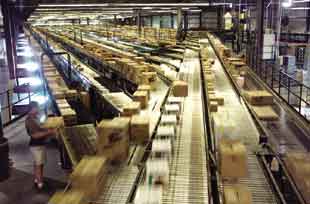From the very beginning, when companies talked about using RFID tags to track products through the global supply chain, there was one question that hung in the air: Who will pay for the tags? It’s a critical issue. Today, passive RFID tags can cost from 20 cents to several dollars depending on the amount of memory and whether the tags are read-only or read-write.

Wal-Mart has made it clear that it won’t shoulder any of the cost for RFID tags. That means large manufacturers are faced with the prospect of spending tens of millions of dollars annually to tag pallets and cases of their products. For most consumer packaged goods manufacturers and other companies operating on thin margins, the extra expense could be extremely significant.
Initially, manufacturers are likely to bear the lion’s share of the cost of RFID tagging. That’s because they need to comply with mandates made by Wal-Mart and the U.S. Department of Defense (DOD) beginning in January 2005. The only way to do that is to buy RFID labels and put them on products as they come off the assembly line. But over time, manufacturers will likely be able to push at least some of the cost for RFID tagging to their packaging and pallet suppliers.
Some manufacturers are already looking to use wooden pallets tagged by CHEP, the global pallet provider (see “Pallet Tracking Goes High Tech,” page 12). Others are talking to their packaging suppliers about embedding RFID tags into corrugated boxes. Printing and packaging companies will have to invest in new machines that will enable them to print antennas with conductive inks and attach the microchip. The packaging companies are not happy about having to invest a significant amount of capital up front to develop and deploy these new machines—especially when it’s not clear whether they will be able to recoup that investment by charging more for their packaging products.
Paper and packaging companies have been looking for ways to offset the potential extra expense. International Paper recently launched an RFID systems integration business to help its customers deploy RFID technologies. International Paper has also invested time and money in developing smart shelf technology. One way to offset the cost of having to build RFID tags into packaging is to track products—either through smart shelves or some other means—and then sell the data back to the retailers and consumer packaged goods manufacturers.
In the end, manufacturers will probably be able to pass some, but not all, of the cost of RFID tagging off to their suppliers. Just how much cost each manufacturer will have to bear will depend on its size and negotiating power. Smaller manufacturers with less negotiating power will be hit harder. Their only option is to deploy the technology more aggressively to try to offset the costs and remain competitive.

